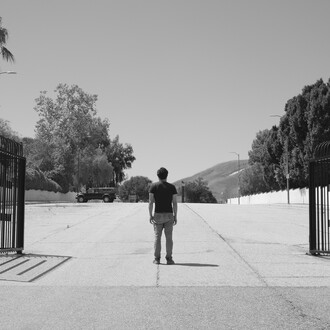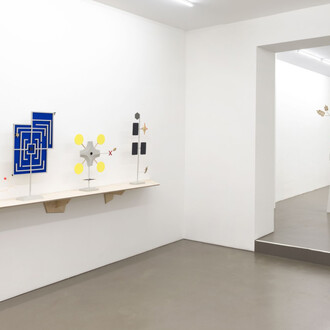Dörte Eißfeldt (b. 1950) has been exploring the creative and conceptual potential of artistic photography since the late 1970s. In her first exhibition at Galerie Thomas Fischer, she presents photographs from several extensive series taken in the 1980s and 1990s. Eißfeldt shows views of a visible world that we perhaps have never seen before in quite this way: be it the human face, the body, or the appearance of things under the influence of light, shadows, and time. At the same time, the materiality of different papers, textures, and printing techniques, as well as the arrangement of the prints on the wall play an equally decisive role.
Dörte Eißfeldt studied art in Hamburg from 1970 to 1976. Having focused on painting and film as a student, she turned to photography after graduating art school, teaching herself to use the medium and, from the very start, understanding it as a means of expression all its own, with specific material qualities and manifestations. Setting itself apart from trends that have dominated artistic photography over the last forty years, such as subjective documentary, staging, or conceptual strategies, her work reveals an approach that is mutable and informed by the materials used and processes employed.
Early exhibitions were held at Essen’s Museum Folkwang, Badischer Kunstverein in Karlsruhe, or Galerie Fotohof Salzburg. The exhibition Perfect world travelled to Goethe-Instituts around the world in the late 1980s. From 1991 to 2016, she taught fine art with an emphasis on photography at Hochschule für Bildende Künste Braunschweig. She is currently one of the three artists nominated for the 2025 Prix Viviane Esders.
Dörte Eißfeldt left the onslaught of images of reality and film behind her and turned to still photography to pose fundamental questions: what is a picture? When does something become a picture? How does a photograph become a picture? Materials and techniques repeatedly play a decisive role here, according to the motto: “Photography has a body and it shows it, too.” Not only the moment the photograph is taken and the events or things before the camera alone stand at the foreground, but their conceptualization, their processing, the focus that the artist gives them, “an open link to the world.”
After all, a section of the world can be seen in the photographic image, in both the infinite and the miniscule. This is made clear in the early work Nach Giordano Bruno (1988) and a reinterpretation of a detail from that picture, Big hot mama (1988/2024). In both works, the dimensions remain unclear. Beyond the framing of the picture, the surface could extend further, in the small reflections of light the brightness is reflected many times over, infinitely like the starry sky. Here, Eißfeldt takes up Renaissance philosopher and astronomer Giordano Bruno’s postulate that the universe could be reflected in a tiny shard of glass.
Questioning images, reformulating them, seeing them from different perspectives: this is exemplary for the experimental processes in the analogue and in the digital realms that Dörte Eißfeldt continuously explores. The series Schneeball (1988) is the artist’s best-known work. Thirty-two interpretations of a single negative attest to the diverse spectrum of volumes and shades and the ambiguity of the fleeting material, universal form, and sensual image.
In the 1990s, Dörte Eißfeldt explored vision itself in the photographs of bodies in the series Haut (1989–1991) and Rücken (1990) by using framing and close-ups. The former operates with the various surfaces of the elements skin and knife and with the contrasts soft-hard, bright-dark, shiny-dull, in front-behind. The latter questions the logic of photographic representation, the representability of the body, the tension between vulnerability and danger. Both series share a special attention to surface stimuli, shades, and a haptic quality that moves the photographs as objects of their own merit to the foreground.
The omission of thematic aspects like culture, genre, location, history of a motif is played through in the work Wald (1991). A forest is to be seen from a greater distance and from above as pure surface, as an “outer skin” and thus remains neutral in terms of significance. A sequence follows the segment of landscape in regular, low-contrast light and arrests the intricate, complex structure of the plants. Can the surface of the forest be depicted as if it were a skin?
The faces in Portraits (I. Eyes shut) (1990–93) are defined by surface, skin, and eyes. Through gradual modulations of contours and shades, they mix in a complex process of prior exposure, development, and solarization on the photographic paper. The layers of silver that result from this process are so dense and intense that the faces in close-up emerge from the shadows and the classical photograph (“light picture”) appears as a picture of shadows, with only spots of light. These portraits go beyond the individual, and should be understood rather as emblematic images. They capture the beholder, as the French art historian and philosopher Georges Didi-Huberman formulated in his theory of an active relationship between the image and the beholder; the images look at us and impact us.
(Text by Carolin Förster)














